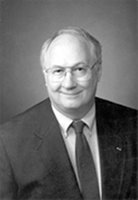Shock, Memory and The Unconscious in Victorian Fiction. By Jill L. Matus.
Cambridge: Cambridge University Press, October 2009. Cloth: ISBN 978-0521760249, $90. 264 pages.
Review by Rebekah Greene, University of Rhode Island
Jill Matus proffers an intricate and intriguing synthesis of canonical Victorian literary texts and the historical development of trauma as a legitimate field of medical (and psychological) study. Matus’s study, surveying “the period 1850-86” (8), begins with an introductory survey of recent scholarship in trauma theory and Victorian studies, suggesting that the Victorian contribution to the discussion of “emotion, memory, and the unconscious” (60) was crucial to the work of later scientists such as Freud. Concerned with “the effect of shock on consciousness and memory” (8), Matus’s work toggles back and forth between scientific treatise and meaty novel, offering insightful readings of psychic shock and its powerful effects while simultaneously raising concerns about the impact that the rapid expansion of trauma theory has had in the arena of literary studies. One of the most considerable achievements of this toggling is the interdisciplinary focus that Matus is able to achieve as she weaves together strands from medicine, psychology, religion, and law, all while still remaining faithful to traditional literary criticism. The highly detailed critiques that Matus offers of novels such as Daniel Deronda, The Mystery of Edwin Drood, and North and South are all extensively researched, making connections to William James, William Carpenter, and Sigmund Freud, among many other key thinkers.
Shock, Memory and the Unconscious in Victorian Fiction offers valuable new insight into the way that the Victorians responded to mental crises. While the work does seem primarily geared towards scholars interested in Victorian history and literature, as well as students of trauma theory, this book is beneficial for novice and expert alike. Thinking about the implications of shock-related injuries through the avenues that Matus provides could prove to be equally illuminating for those interested in other literary periods, art history, or even film studies.
Unfortunately, the excellence of Matus’s project slips during her discussion of Robert Louis Stevenson’s novella The Strange Case of Dr. Jekyll and Mr. Hyde. Although Matus succeeds in suggesting that Stevenson had an interest in the scientific discourse relating to multiple personalities, specifically the work of F.W.H. Myers that surfaced during the mid-1880’s, she falls short in situating her reading within the current burgeoning discussion of Stevenson’s relationship to science as detailed in books such as Julia Reid’s 2009 Robert Louis Stevenson, Science, and the Fin de Siècle. After reading the detailed introductions and reviewing the careful notes for each of the previous chapters, the light discussion of current Stevenson scholarship feels abrupt. (A chapter on Elizabeth Gaskell’s North and South runs for a similar length but seems to more carefully situate the text under discussion with current scholarship.) In spite of these potential drawbacks for serious Stevenson scholars, Matus does achieve an attractive overview of how Stevenson explored the ideas of consciousness, dreams, and responsibility in both The Strange Case of Dr. Jekyll and Mr. Hyde and his essay “A Chapter on Dreams.” Still, the chapter could nicely serve in an introductory-level literature class as a complementary assigned reading to historicize Stevenson and his work.
Neatly contrasting this chapter, Matus’s interlacing of biographical data and explication pays off most rewardingly in her excellent close readings of Dickens and George Eliot. Beginning her tracing of memory through two later works of Charles Dickens, “The Signalman” and the unfinished The Mystery of Edwin Drood, Matus gently alerts the reader to Dickens’s own connection to trauma, the result of an 1865 railway accident. Working through this moment of tragedy, Matus suggests, gave Dickens an ability to consider moments of shock and “powerlessness in the survivor” (99), particularly in “The Signalman,” a short story considering notions of guilt and the unconscious. These continued concerns about the unconscious and its potential role in crime continued to haunt Dickens, culminating in The Mystery of Edwin Drood. Matus’s reading of Edwin Drood is nicely punctuated throughout with short asides that compare the novel to Wilkie Collins’s The Moonstone (118-119) or cheerfully inform her reader that Dickens was “a practicing mesmerist” (97). The work she performs in this chapter tantalizingly draws her reader in to an informative discussion of shock, association, and the role of “confusion in memory” (119) within a sometimes complicated and perplexing novel.
Comparable to her chapter on Dickens, Matus’s reading of George Eliot’s The Lifted Veil and Daniel Deronda weaves together a rich web of connections between Eliot’s work, George Henry Lewes and “his ideas about physiology and psychology” (124), and “Victorian and subsequent emotion theory” (124). Of particular interest in this chapter is the way that Matus treats the idea of psychic shock in Eliot’s work as something that wounds its victims (138). For Matus, Eliot’s rich treatment of characters particularly focuses on the internal workings of the mind, especially the act of processing emotions that are sometimes so intense that they can be crippling (122). Thinking through this idea, she succeeds in unpacking Eliot’s rich narratives, bringing to light the complicated “struggle” (150) that characters such as Gwendolen in Daniel Deronda and Latimer in The Lifted Veil must endure as they attempt to cope with “overwhelming emotions” (121) that surface as the result of traumatic incidents. The Dickens and Eliot chapters, will, no doubt, be of interest to scholars interested in the work of these two authors. However, Matus’s groundbreaking scholarship here can certainly lend to interesting and informative readings of the role that psychic shock played in the works of the contemporaries of Dickens and Eliot.
Overall, Shock, Memory, and the Unconscious in Victorian Fiction offers a rich overview of the evolution of the Victorian interest in the mind and its complicated processes. Including texts such as scientific treatises and more recent scholarship relating to the development of trauma theory allows Matus the ability to provocatively scrutinize well-loved canonical works of literature for an additional (and previously neglected) layer of meaning stemming from a lively discourse between literature and science. Educational and enlightening, Matus’s book is a useful tool for anyone investigating the intersections between trauma theory and Victorian literature.
Subscribe to:
Post Comments (Atom)







No comments:
Post a Comment